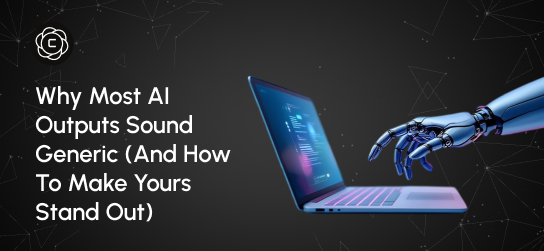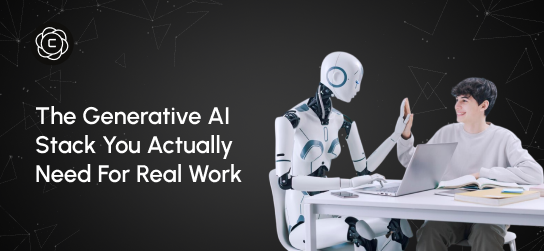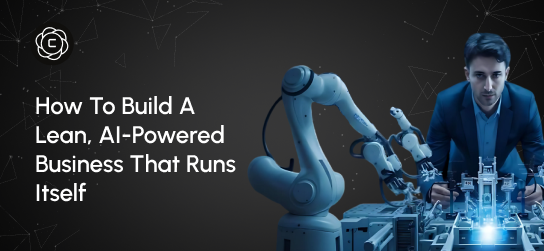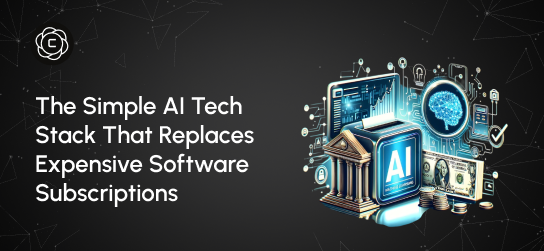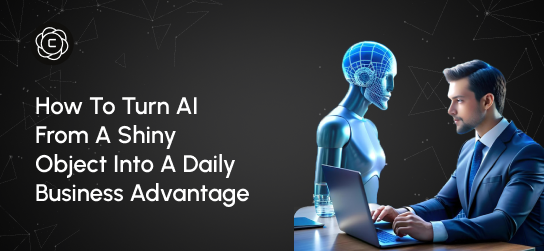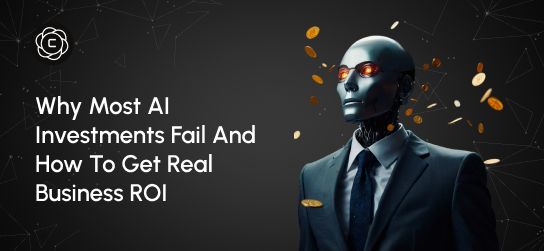Learning Center
Master AI creativity with our comprehensive guides, tutorials, and expert insights. From beginner basics to advanced techniques.
GPT‑5, The New AI Era Is Here! Features Explained (Mid‑2025)
How OpenAI's Next-Generation Model Will Transform the Way We Work
The artificial intelligence landscape is about to shift dramatically. GPT-5 isn't just another incremental update in OpenAI's model lineup—it represents a fundamental reimagining of what AI assistants can be. By merging the expansive knowledge capabilities of the GPT series with the sophisticated reasoning powers of the O-series, OpenAI is building something entirely new: a unified intelligence platform that adapts to your needs automatically.
For entrepreneurs, innovators, and strategic thinkers, this evolution signals more than just better technology. It marks the beginning of an era where AI stops being a collection of specialized tools and becomes a true collaborative partner.
The End of the Model Picker
If you've used ChatGPT recently, you're familiar with the dilemma: which model do you choose? Need speed? Pick GPT-4. Need deep reasoning? Switch to O1. Want image analysis? Make sure you're using the right configuration.
Sam Altman has made it clear that this fragmented experience is coming to an end. GPT-5 will eliminate the model picker entirely by intelligently determining what kind of processing each task requires. Ask a simple question, and it responds instantly. Present a complex problem, and it automatically engages deeper reasoning capabilities.
This isn't just about convenience. It's about removing cognitive friction from AI interaction. Users won't need to understand model architectures or capabilities—the system simply adapts to the task at hand. One model, multiple modes, zero guesswork.
Reasoning Built Into the Core
Previous GPT models excelled at pattern recognition and language generation, but they often stumbled when true logical reasoning was required. GPT-4.5, codenamed Orion, was the last model in this lineage—impressive, but fundamentally limited in its ability to think through multi-step problems.
GPT-5 changes this by integrating chain-of-thought reasoning directly into its architecture. This means the model doesn't just predict the next likely word based on patterns—it actually works through problems step by step, evaluating logic, checking its own conclusions, and arriving at more reliable answers.
The practical implications are significant. Mathematical calculations become more accurate. Code generation produces fewer bugs. Complex questions receive answers that demonstrate genuine understanding rather than sophisticated guesswork. Most importantly, the dreaded "hallucination" problem—where AI confidently states incorrect information—becomes far less frequent.
For technical users, this represents a quantum leap in reliability. For everyone else, it means trusting AI outputs becomes easier and more practical.
True Multimodal Intelligence
Text-based AI has dominated the conversation for years, but the real world doesn't communicate in text alone. We use images, speak with our voices, watch videos, and process information through multiple channels simultaneously.
GPT-5 is being designed from the ground up to handle this reality. Early testing suggests seamless integration across text, audio, images, and potentially video inputs. This isn't about bolting different capabilities onto a text model—it's about creating a system that genuinely understands information regardless of format.
Imagine describing a product idea verbally, sketching a rough design, and having the AI understand both the visual concept and the spoken context. Or analyzing a video presentation and receiving detailed feedback on both content and delivery. Or uploading a chart and asking complex analytical questions that require understanding the visual data relationships.
This unified approach eliminates the need to switch between specialized tools. One assistant handles everything, maintaining context across different types of information and interactions.
Memory That Actually Remembers
Current AI assistants have a frustrating limitation: they forget. Each conversation might maintain context, but preferences, past discussions, and learned information disappear when you start a new chat.
GPT-5 aims to solve this with persistent memory capabilities. While details remain under wraps, reports suggest the system will be able to retain information about your work style, preferences, ongoing projects, and frequently used information.
This transforms the AI from a one-off tool into a genuine assistant that improves with use. It could remember that you prefer formal writing for business documents but casual tones for social media. It might recall the key details of your product launch from three months ago when you reference it in passing. It could track your evolving strategy and provide consistent support across multiple projects.
The implications for productivity are enormous. No more repeating context. No more re-explaining your preferences. The AI becomes truly personalized over time.
The Development Challenge
Creating GPT-5 hasn't been a straightforward process. The scale of this project is unprecedented, with individual training runs costing over $500 million. That's not a typo—half a billion dollars for a single training attempt.
Beyond the computational costs, OpenAI has faced a more fundamental challenge: data scarcity. The public internet, already thoroughly scraped for previous models, simply doesn't contain enough high-quality information to train a system this sophisticated. The company has had to negotiate access to proprietary datasets, form partnerships with publishers, and find creative solutions to the data problem.
These obstacles have caused delays and required innovative approaches. But the result appears to be a system that operates at a completely different level of capability—one that justifies the enormous investment required to build it.
What This Means for Your Work
The arrival of GPT-5 represents more than just access to a smarter chatbot. It signals a shift in how AI integrates into professional workflows.
You won't need to toggle between different AI models based on task complexity. The system handles that automatically, providing speed when you need it and depth when the problem demands it.
You won't be limited to text-based interaction. Voice, images, and potentially video become natural parts of the conversation, making AI accessible in more situations and contexts.
You won't start from scratch with every session. The AI remembers your context, preferences, and ongoing projects, becoming more useful over time rather than remaining static.
Most importantly, the gap between having an idea and producing a finished output shrinks dramatically. The AI stops being a tool you use for specific tasks and becomes a collaborator that helps you think through problems, refine concepts, and execute solutions.
This isn't about replacing human creativity or strategic thinking. It's about amplifying those capabilities and removing the friction that slows down execution.
Preparing for the Launch
GPT-5 is expected to arrive in mid-2025, possibly during the summer months. That might seem far away, but smart organizations are already preparing.
The most valuable preparation involves rethinking your workflows. How would persistent memory change your documentation practices? What processes could be streamlined if one AI system could handle text, audio, and visual inputs? Where does reasoning capability add the most value to your operations?
Experimenting with current advanced models provides insights into what's coming. Testing multi-step reasoning prompts, exploring multimodal applications, and building systems that could integrate with more capable AI all prepare you for the transition.
For developers and technical teams, the opportunity is even greater. Applications and plugins that enhance GPT-5's reasoning capabilities, provide specialized interfaces, or integrate the AI into specific workflows will have significant value. The API will likely open new possibilities that don't exist with current models.
The key insight is that waiting for launch is the wrong strategy. The organizations that will benefit most from GPT-5 are those preparing now, understanding its capabilities, and designing systems ready to leverage its full potential from day one.
The Bigger Picture: AI as Creative Partner
Step back from the specific features and capabilities, and a larger pattern emerges. GPT-5 represents OpenAI's vision for the next phase of artificial intelligence—not as a collection of specialized tools, but as unified partners in creative and strategic work.
You're no longer writing prompts and hoping for useful outputs. You're collaborating with a system that can think, remember, adapt, and communicate across multiple formats. The interaction becomes less transactional and more conversational. Less about commanding and more about collaborating.
This shift has profound implications. Work becomes faster as friction decreases. Quality improves as reasoning capabilities mature. Creativity expands as AI handles execution details while you focus on strategy and vision.
The organizations that embrace this transition—not just adopting the technology but rethinking how they work—will have a significant competitive advantage. Those that treat GPT-5 as simply a better chatbot will miss the larger opportunity.
Conclusion: Leading the Next Wave
The arrival of GPT-5 marks an inflection point in the AI revolution. The technology has matured beyond novelty and raw capability into something more sophisticated: intelligence that adapts, remembers, and truly collaborates.
For professionals across industries, this creates both opportunity and imperative. Opportunity to work faster, think bigger, and execute more effectively. Imperative to understand these capabilities and integrate them thoughtfully into workflows.
The question isn't whether AI will transform how we work—it's whether you'll be leading that transformation or catching up to it.
GPT-5 is coming. The real question is: are you ready?
Table of Content
- How OpenAI's Next-Generation Model Will Transform the Way We Work
- The End of the Model Picker
- Reasoning Built Into the Core
- True Multimodal Intelligence
- Memory That Actually Remembers
- The Development Challenge
- What This Means for Your Work
- Preparing for the Launch
- The Bigger Picture: AI as Creative Partner
- Conclusion: Leading the Next Wave

Your Calendar Is Not Broken (Your Mental Operating System Is)
Last month, I watched a founder spend three hours reorganizing his calendar app for the fourth time this year. Different colors, new categories, smarter blocking strategies. By week two, he was back to the same chaotic pattern: overcommitted, constantly running late, and feeling like his day controlled him instead of the other way around. The problem wasn't his calendar. It was the mental operating system running underneath it. Calendar issues aren’t about tools; they’re about how you think about time. They download new apps, try productivity methods, and wonder why nothing sticks. Meanwhile, the real issue sits in how their brain processes time, priorities, and commitments.
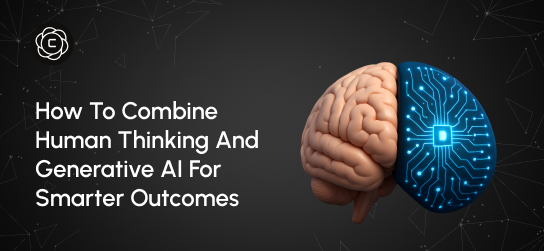
How to Combine Human Thinking and Generative AI for Smarter Outcomes
Last Tuesday, I watched two product managers go head-to-head on the same challenge. Same tools. Same data. Same deadline. But the way they used AI couldn’t have been more different and the results made that difference unmistakable. One delivered a generic solution, familiar and easily replicated. The other crafted a proposal that felt thoughtful, grounded, and strategically distinct. Their CEO approved it for implementation within minutes. The gap wasn’t technical skill or AI proficiency. It was their thinking architecture, the way they framed the problem, used AI to explore, and layered in human context to guide the output.
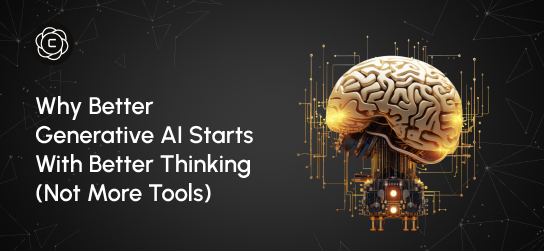
Why Better Generative AI Starts With Better Thinking (Not More Tools)
Four months ago, I watched a marketing director spend $400 on AI subscriptions only to produce the same mediocre content she'd always created. Her problem wasn't the tools. It was her approach. This scenario plays out everywhere. Professionals accumulate AI subscriptions like digital trophies, believing more tools equal better results. They're missing the fundamental truth: generative AI amplifies your thinking, not replaces it. The best AI users I know don't have the most tools. They have the clearest thinking processes.
Stay Updated
Get the latest AI insights, tutorials, and feature updates delivered to your inbox.
